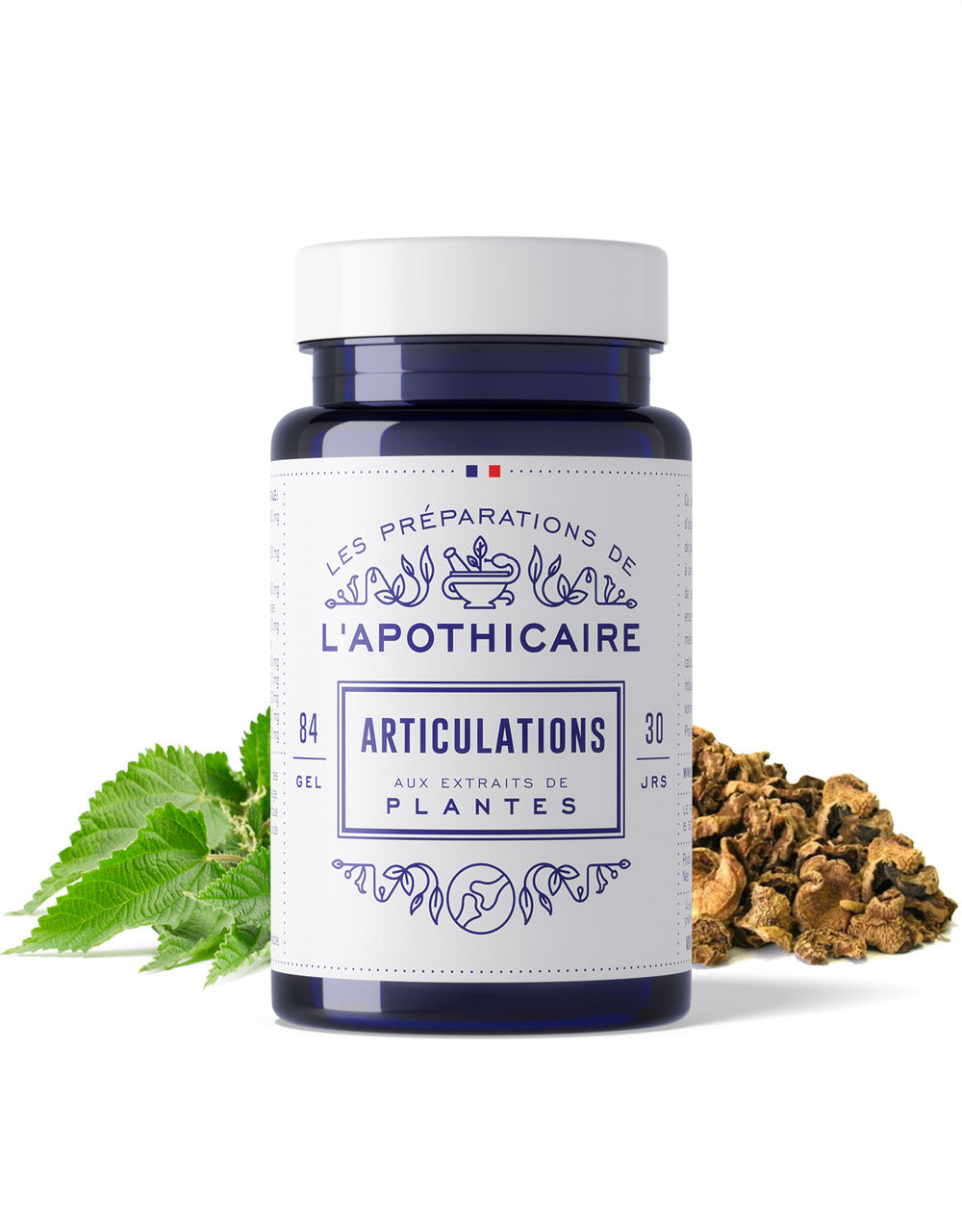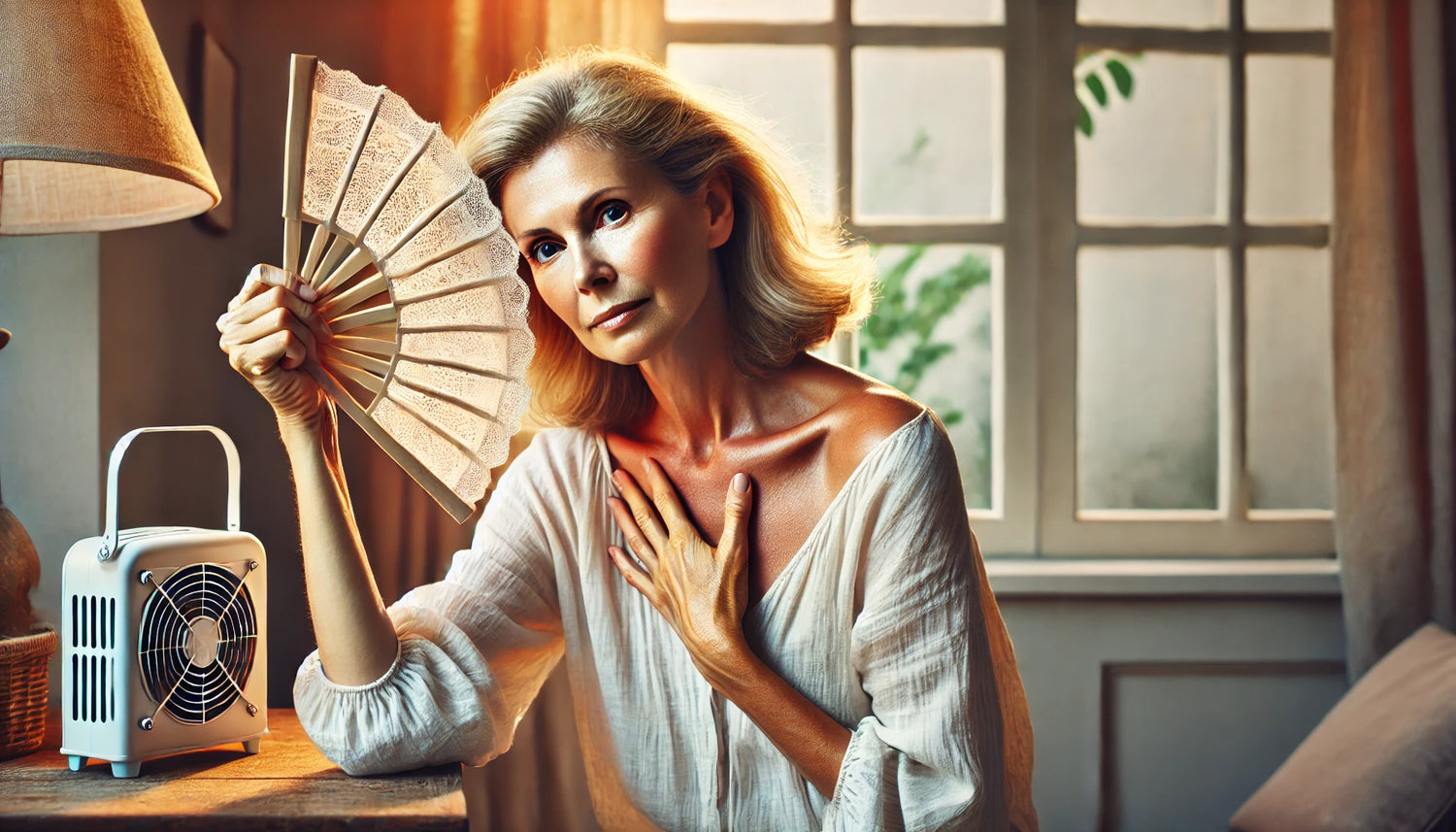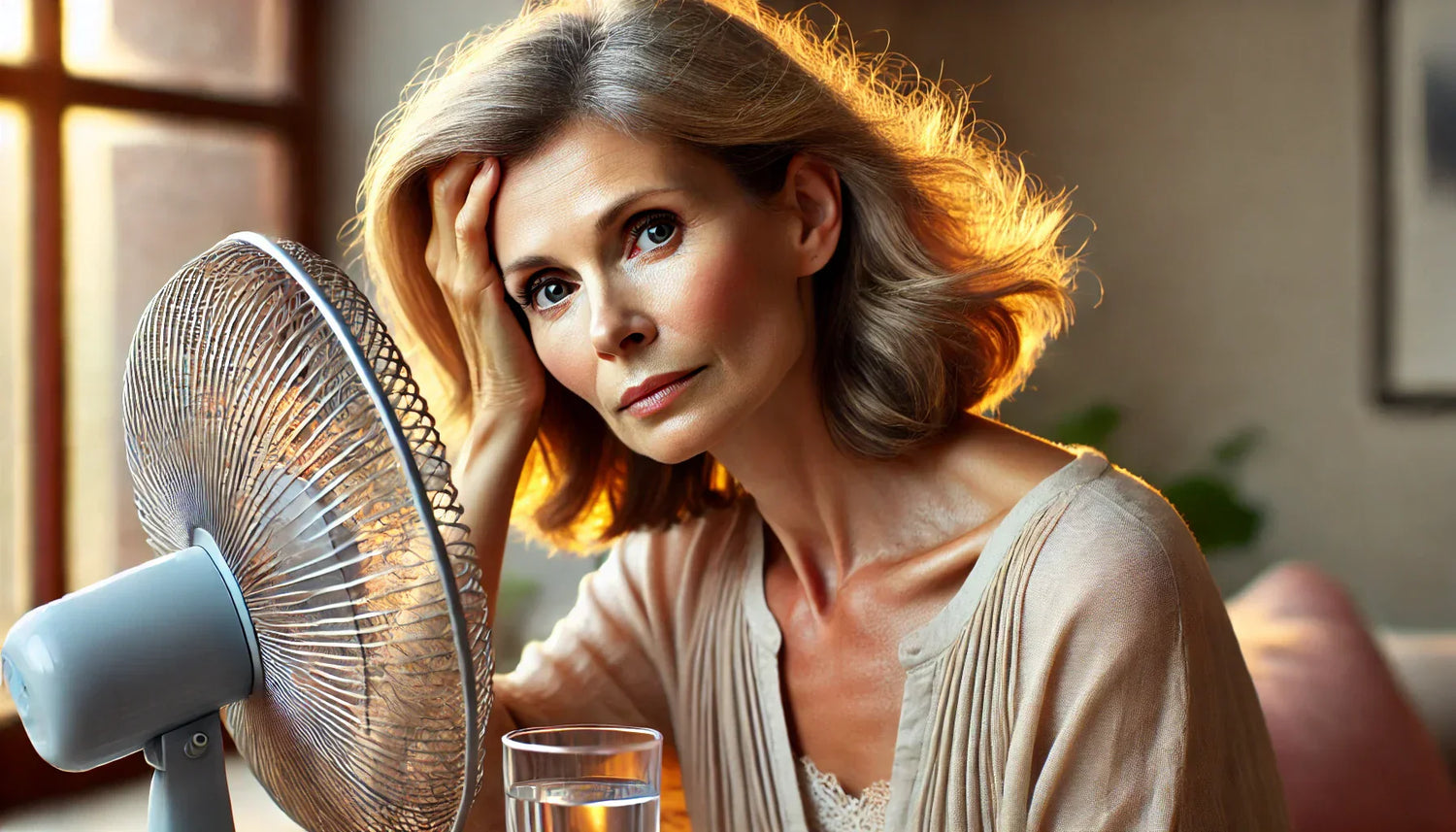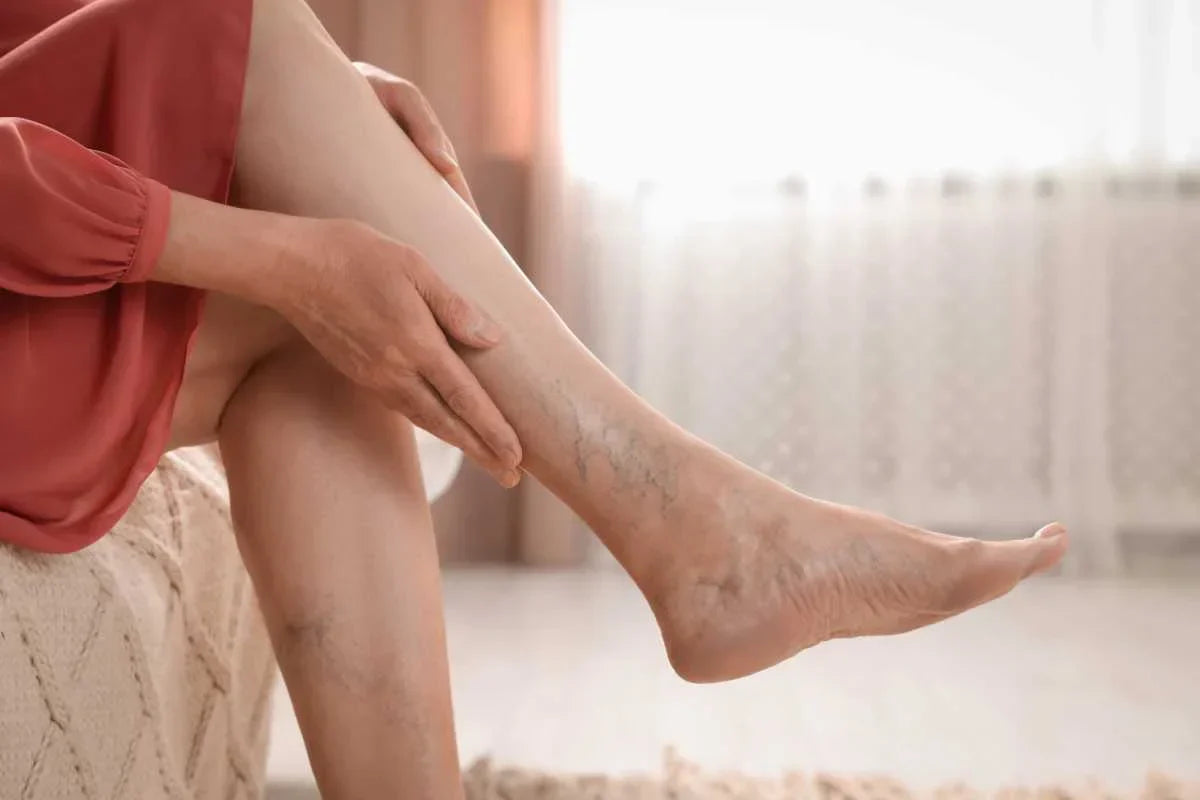Menopause is a natural stage in a woman's life, marked by the definitive cessation of menstruation and a decrease in female hormones, particularly estrogen and progesterone. This hormonal upheaval is accompanied by many symptoms, both physical and psychological, which vary from one woman to another. Among these disorders, joint pain is particularly common and can affect quality of life. It is due to the drop in estrogen, which plays a protective role on the joints, as well as the natural aging of cartilage. Fortunately, natural solutions exist to relieve this pain and regain comfort in everyday life.
- What is menopause?
- Why do we have joint pain during menopause?
- Causes of Joint Pain During Menopause
- How to naturally treat joint pain during menopause?
What is menopause?
Definition of menopause
Menopause is a natural phenomenon . It is the period in a woman's life when her periods (menstruation) stop permanently, which is defined as amenorrhea.
It occurs when the ovaries stop secreting hormones (estrogen and progesterone) and the formation of an egg each month . Procreation is no longer possible. Menopause is said to be truly established when periods have been absent for a year. It generally occurs between the ages of 45 and 55.
What are the symptoms of menopause?
First of all, it is a hormonal upheaval that causes several symptoms.
Fluctuations in hormone levels can primarily contribute to the onset of perimenopausal signs such as:
- worsening of menstrual migraines,
- breast tenderness,
- change in menstrual flow,
- change in menstrual cycle (short or long cycles),
- irritability
Symptoms can last from 6 months to >10 years and vary in intensity from none to severe.
The symptoms of menopause are physical and/or psychological:
- hot flash,
- night sweats,
- dryness of the skin and mucous membranes,
- urinary incontinence,
- urinary tract infection (cystitis),
- vaginal atrophy,
- fatigue,
- weight gain,
- sleep disorders,
- mood disorders,
It is important to mention that not all women are affected by these climacteric disorders.
Those who do may have one or more symptoms, which may be subtle in some, but unpleasant, bothersome and affect quality of life in others.
Regular medical monitoring allows them to be treated quickly.

Why do we have joint pain during menopause?
Estrogen receptors are found in many structures , including joints and cartilage.
Estrogen production decreases and can directly impact the joints, causing pain.
When estrogen levels decline, joint protection may weaken .
Finally, the pain is due to normal wear and tear on the joints as we age.
These joint pains most often affect the small joints of the hands and feet.
Other joints such as the knees, elbows and neck joints may also be affected.
The pain is accompanied by other musculoskeletal signs such as:
- a stiffness,
- a reduction and limitation of movements.
Causes of Joint Pain During Menopause
There are a number of causes of joint pain during menopause.
Sedentary lifestyle
Sedentary lifestyle is a real scourge in our time, it can be the cause of various health problems, such as diabetes, overweight, arthritis, however it can also lead to weakening of muscles and joints at menopause. Muscle wasting increases the risk of stiffness and fractures resulting in reduced mobility.
Dehydration
The kidneys have a filtering action and allow the body to get rid of toxic waste such as uric acid, a product of protein breakdown, the crystals of which can accumulate in the joints, generating significant inflammation and pain and leading to arthritis of the toes or fingers, which causes gout.
Stress
In cases of significant and prolonged stress, the body releases large amounts of cortisol, the stress hormone which acts as an inflammatory factor.
Also, high stress thresholds during menopause will only make joint pain worse.
Stress can also cause muscle contraction and even tension, further increasing inflammation and discomfort.
Bad posture
Quick anatomical reminders. Ligaments connect one bone to another and are necessary for joint stability, while tendons connect muscles to bones. When ligaments and tendons lose their elasticity, range of motion and ease of movement can be reduced.
Poor posture puts extra pressure on your joints.
It limits your range of motion and makes it much harder for your muscles to take pressure off your joints.
Over time, it can cause the spine to become misaligned, which eventually increases joint pain.
When you're in pain, you tend to hold yourself differently, reposition your body to relieve the painful area, but you risk putting additional pressure on other areas. Indeed, certain pain-relieving positions can aggravate joint problems.
Additionally, if your joints, ligaments and tendons are affected, it can change your entire posture, pulling on your muscles and causing joint and muscle pain at the same time.
In this case, it is important to consult a healthcare professional in order to obtain solutions adapted to your situation.

How to naturally treat joint pain during menopause?
Menopause brings hormonal changes that can cause joint pain, often due to a decrease in estrogen. Fortunately, there are some natural solutions that can help alleviate this pain and improve your quality of life.
Drink plenty of water
Hydration plays a vital role in joint lubrication. Proper hydration helps maintain cartilage flexibility and reduces inflammation. It is recommended to drink at least 1.5 to 2 liters of water per day , favoring mineral water rich in magnesium.
Adapt your diet
A proper diet can help reduce inflammation and protect joints.
- Omega 3 : These fatty acids have anti-inflammatory properties and help protect joints. They are found in oily fish (salmon, mackerel, sardines), flaxseed oil, rapeseed oil and walnuts.
- Antioxidants : they protect cells from aging and reduce inflammation. It is recommended to consume colorful fruits and vegetables (red fruits, carrots, spinach, broccoli, peppers).
- Calcium and vitamin D : These are essential for maintaining strong bones and preventing osteoporosis. Calcium is found in dairy products, almonds and green vegetables. Vitamin D, on the other hand, is synthesized by the skin through exposure to sunlight and can be supplemented with foods such as oily fish or supplements if necessary.

Regain flexibility and joint comfort!
Our natural formula based on **turmeric, devil's claw and boswellia** contributes to the mobility and well-being of your joints.
Discover the Joints supplement!Practice regular physical activity
Physical exercise helps maintain joint flexibility and strengthen the muscles that support them. Activities to focus on include:
- The walk
- Yoga or tai chi to improve flexibility
- Swimming or aquagym which gently work the joints
It is recommended to practice at least 30 minutes of physical activity per day , adapting the intensity to your level.
Use hot or cold
Alternating hot and cold can effectively relieve joint pain:
- Heat (hot bath, hot water bottle, heating pad) promotes blood circulation and relaxes stiff muscles and joints.
- Cold (ice packs, cold compresses) is ideal for reducing inflammation and calming a painful joint after exercise.
Heat and cold can be alternated depending on the nature of the pain for optimal relief.
Menopause is a transitional period when it is essential to take care of your body in general and your joints in particular. Take care of your joints, stay active!







